Canada
Canada's original inhabitants originated in Asia; as they searched for food, people from that continent crossed the Bering Strait between Alaska and Russia.
Over an indefinite period of time, a wide variety of unique Indian cultures and nations developed and prospered across most ofNorth America, including all of Canada.
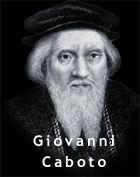 Convincing evidence exists that near the end of the 11th century, Leif Ericson, a seafaring Viking from Scandinavia,traversed the frigid waters of the North Atlantic Ocean and established a small settlement named Vinland along the coast of Newfoundland; it was eventually abandoned.
Convincing evidence exists that near the end of the 11th century, Leif Ericson, a seafaring Viking from Scandinavia,traversed the frigid waters of the North Atlantic Ocean and established a small settlement named Vinland along the coast of Newfoundland; it was eventually abandoned.
Giovanni Caboto, an Italian navigator and explorer, known in English as John Cabot, landed along the northeastern shore of Canada in 1497, and immediately claimed the land for his patron, King Henry VII of England. The Cabot discovery substantiated England's claim to a significant slice of North America.
News of this bountiful land soon spread across Europe, and in the years that followed, European fishing vessels regularly harvested the coastal waters. In 1524, not to be outdone by England, the King of France commissioned Giovanni da Verrazano to explore this New World.
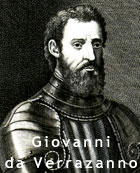 The Italian explorer's discoveries along the eastern coastline of North America gave France its own claim to parts of this land. A decade later the King dispatched Jacques Cartier on another mission of discovery. Cartier and crew would make three trips into the Gulf of St. Lawrence area.
The Italian explorer's discoveries along the eastern coastline of North America gave France its own claim to parts of this land. A decade later the King dispatched Jacques Cartier on another mission of discovery. Cartier and crew would make three trips into the Gulf of St. Lawrence area.
By the turn of the century, the French were heavily involved in the lucrative fur trading business in Canada. On one of those fur trapping missions in 1605, the French geographer and explorer, Samuel de Champlain, established France's first settlement in western Nova Scotia. Port Royal would later be abandoned, but in 1608, he founded a permanent colony in Quebec, a colony that would later become the capital of New France.
New France continued to grow, albeit slowly, and Champlain was appointed governor in 1633. Trois-Rivieres was founded in 1634, and Montreal, a missionary outpost established in 1642, would eventually grow to become Canada's largest city.
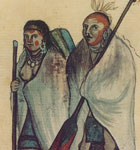 For the indigenous Indians, contact with these early Europeans proved disastrous, as explorers and traders unintentionally brought diseases, such as smallpox with them. Thousands would get sick and die, and relationships between Indians and Europeans were strained, at best.
For the indigenous Indians, contact with these early Europeans proved disastrous, as explorers and traders unintentionally brought diseases, such as smallpox with them. Thousands would get sick and die, and relationships between Indians and Europeans were strained, at best.
The French, seemingly out of necessity, befriended several Indian nations, including the Algonquin and Huron. On the other hand, the Iroquois detested the French, and using weapons provided them by the British, waged relentless war on their sworn enemies. In 1666, a detailed census of New France indicated a small population of just over 3,000. In contrast, the English were still controlling parts of Canada's Maritime Provinces, as well as their heavily-populated colonies on the Atlantic seaboard, colonies that would later form the heart of a new nation called America. Also, England's Hudson Bay Company, founded in 1670, would later become North America's most significant fur trader.
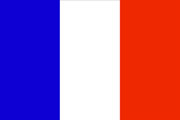 Conflict between these two nations was inevitable, and in the late 17th century the French (New France) began to fight the British (New England) for control of this valuable real estate. The French utilized their local Indians friends as allies, and those experienced warriors attacked numerous English settlements in the Colonies; countless houses were burned and many settlers were kidnapped or killed.
Conflict between these two nations was inevitable, and in the late 17th century the French (New France) began to fight the British (New England) for control of this valuable real estate. The French utilized their local Indians friends as allies, and those experienced warriors attacked numerous English settlements in the Colonies; countless houses were burned and many settlers were kidnapped or killed. In 1713, the Treaty of Utrecht restored a certain level of peace between France and the forces of England. However, as part of that agreement, France was forced to cede Newfoundland, Hudson Bay, and Nova Scotia to England.
Regardless, the French continued to build forts across their massive territory for protection from Indians, and from the expanding influence of Britain in the Americas. By the middle of the 18th century, over 70,000 people inhabited New France, but Britain's colonies along the Atlantic Ocean coastline now exceeded one million.
During the Seven Years' War (1756–1763), a war involving all of the major European powers of the day, France was the biggest loser. Its position as a major colonial power in the Americas ended, as it lost much of its long-held possessions on the North America continent to the British.
That war verdict aside, eastern Canada was still culturally and politically French, and in the on-going effort to administer and control their new French-speaking territory, the British faced many problems, especially from Indians.
In one daring and unexpected move, rebels from withinBritain's original colonies developed a plan to invade and capture all the Canada colony; Montreal was quickly taken, but the fort at Quebec held firm in an inspirational battle that changed the future of Canada forever.
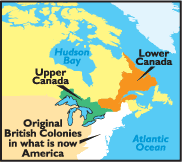 After the American Revolutionary War ended in 1783, a large group of loyalists to the British Crown (Tories) immigrated to Canada from the American colonies.
After the American Revolutionary War ended in 1783, a large group of loyalists to the British Crown (Tories) immigrated to Canada from the American colonies. In 1791, with this large English-speaking aggregation now living in French-speaking Canada, the British Parliament made its move. In a Constitutional Act, it split the Province of Quebec intoUpper and Lower Canada; each to have its own representative government and its own individual lanquage.
Throughout the 18th century, the Hudson Bay Company gave traders the opportunity to explore uncharted lands in northern and western Canada. One of those fur traders, Samuel Hearne, discovered Great Slave Lake and became the first non-Indian to reach the Arctic Ocean over land.
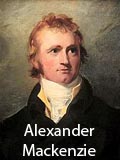 In 1783, a prominent group of Montreal merchants began the North West Fur Trading Company, in direct competition with England's Hudson Bay Company. Alexander Mackenzie, one of their traders, and a Scottish-Canadian explorer, followed his now namesake river from its source to the Arctic Ocean,
In 1783, a prominent group of Montreal merchants began the North West Fur Trading Company, in direct competition with England's Hudson Bay Company. Alexander Mackenzie, one of their traders, and a Scottish-Canadian explorer, followed his now namesake river from its source to the Arctic Ocean,He later crossed the Rocky Mountains, finding a route to the Pacific Ocean. He was knighted for his efforts in 1802In the early 19th century tensions peaked between America and the British Empire over maritime power abuses, and the War of 1812 was the result.
Upper Canada and Lower Canada were quickly embroiled in that conflict as America launched invasions against British forces on the Canadian frontier.
In the end there were no real land gains or losses on either side, but some historians believe that the War of 1812 shifted American migration desires and interests from Canada, west into the Great Lakes area.
After the war, waves of immigrants from the British Isles began to settle in this new frontier. By mid-century, that great migration had brought nearly 750,000 newcomers into eastern Canada.
 In 1837, rebellions against British rule took place in both Upper and Lower Canada. A few local skirmishes in Upper Canada were outdone by more serious uprisings in Lower Canada. A declaration of independence was read in Napierville, but the British finally squelched, at least temporarily, the growing desire for sovereignty.
In 1837, rebellions against British rule took place in both Upper and Lower Canada. A few local skirmishes in Upper Canada were outdone by more serious uprisings in Lower Canada. A declaration of independence was read in Napierville, but the British finally squelched, at least temporarily, the growing desire for sovereignty. The British Parliament subsequently acted, and the Act of Union (1840) essentially merged both Upper and Lower Canada into a single centralized governmental entity, appropriately named - the Province of Canada.
It consisted of Canada East, the eastern portion of the modern-day Province of Quebec (a French-speaking region), and Canada West, the southern portion of the modern-day Province of Ontario, (a mainly English-speaking region).
That new government was first seated in Kingston. In 1845 it was moved to Montreal, then between Toronto and Quebec, and finally to Ottawa in 1865.
It was a critical time in the constitutional history of Canada, as self-government procedures were in place, but that did not prevent disputes between French and English factions in the legislative assembly. Deadlocks were common, and proved to be one of the major reasons behind the Canadian Confederation in 1867.
On July 1, 1867, after discussions in London by all parties concerned, the British Parliament enabled the British North America Act, an act which gathered the Province of Canada, and the maritime colonies of New Brunswick and Nova Scotia into a single dominion. The term dominion was chosen to indicate Canada's status as a self-governing entity of the British Empire.
The annual celebration of the British North America Act is now Canada's National Day, or Canada Day, a federal statutory holiday celebrating the anniversary of the event.
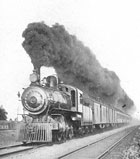 As the Canadian Pacific Railway helped grow this new Dominion in all directions, its territory quickly expanded; Manitoba joined the Dominion in 1870, British Columbia in 1871, and Prince Edward Island in 1873. The gold rush of 1897 brought thousands of prospectors into the undeveloped western prairie lands, and in 1905, Saskatchewan and Alberta were admitted as provinces.
As the Canadian Pacific Railway helped grow this new Dominion in all directions, its territory quickly expanded; Manitoba joined the Dominion in 1870, British Columbia in 1871, and Prince Edward Island in 1873. The gold rush of 1897 brought thousands of prospectors into the undeveloped western prairie lands, and in 1905, Saskatchewan and Alberta were admitted as provinces. Canada's best participated admirably in World War I (1914-1918). Canadian Corps repeatedly spearheaded Allied attacks against the Germans, thus earning their battle scars and stripes, and the respect of their peers.
Following World War I, Canada experienced record expansion in business, both large and small. Technical advances and industrial production were moving off the chart. Unfortunately, a turndown was lurking.The 1926 Imperial Conference, held in London, brought together the Prime Ministers of the Dominions of the British Empire. During that conference the Balfour Declaration established the principle that the Dominions are all equal in status, and not subordinate to the United Kingdom. That resolution was confirmed by the British Parliament, and Canada's sovereignty was the result.
The Great Depression of the 1930's brought an economic meltdown to many countries. In its wake it devastated Canada, especially in the provinces of Alberta, British Columbia, Manitoba and Saskatchewan.
After Britain declared war on Germany in 1939, Canada followed suit and World War II began. Canadian troops were involved in many war-changing battles including the Battle of Normandy. In the end, the Allies defeated Germany and Canada paid a price. Nearly 50,000 Canadians gave their lives, with thousands wounded.
A positive by-product of World War II was that it ended any lingering effects of the Great Depression in Canada. To support the needs of the war, workers produced raw materials and manufactured goods in record quantities. Canada was again on an economic roll, and it would never look back.
 After decades of bitter debate over its border with Quebec, Newfoundland joined Canada as a province in 1949; the massive St. Lawrence Seaway opened in 1959, and on February 15, 1965, Canada proudly flew its first official national banner, a red and white maple-leaf flag.
After decades of bitter debate over its border with Quebec, Newfoundland joined Canada as a province in 1949; the massive St. Lawrence Seaway opened in 1959, and on February 15, 1965, Canada proudly flew its first official national banner, a red and white maple-leaf flag. The British North America Act marked its 100th anniversary on July 1, 1967, and fifteen years later, in 1982, it was replaced by Canada's new constitution. Queen Elizabeth traveled to Ottawa and proclaimed the document as official, and constitutional powers were transferred from Great Britain to Canada.
With pride in their French heritage, Quebec began a movement in the 1960's to separate itself from Canada, and establish a French-speaking nation. The first vote on same failed, but in 1995, the government of Quebec tried a sovereignty vote again. It was rejected by a slim margin of less than 1%. In 1997, the Canadian Supreme Court ruled unilateral secession by a province to be unconstitutional, but that separatism fever still burns.
On May 4, 1992, voters in the Northwest Territories authorized the partition of their huge area into two separate territories, one to become a self-governing homeland for Inuit peoples, or Eskimos. That new territory was called Nunavut, meaning Our Land.
Canada is a land of vast distances and rich natural beauty and resources. As an affluent, high-tech industrial society in the trillion-dollar class, Canada resembles the United States in its market-oriented economic system, pattern of production, and affluent living standards.
Canada faces the political challenges of meeting public demands for quality improvements in health care and education services. Canada also aims to develop its diverse energy resources while maintaining its long-held commitments to the environment.
No comments:
Post a Comment